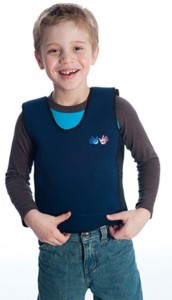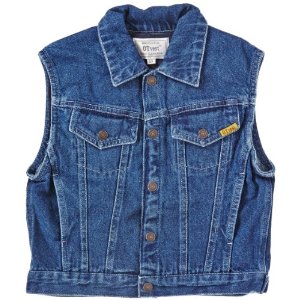A Weighted Vest for Autism?
Many children with special needs such as autism and autism spectrum disorders have difficulties with paying attention to tasks and staying focused. Some may exhibit sensory and tactile defensiveness. Others may demonstrate self-harming behaviors. While the causes of these difficulties can vary from child to child, one successful intervention that many of these children respond to is wearing a weighted vest.
How Can Weighted Vests Help Autistic Children?
Weighted vests are a type of treatment that falls under the category of sensory integration. Generally, weighted vests for autism are constructed to weigh approximately 10 percent of the individual’s total body weight. For preschool children, the percentage can be as low as 2-3 percent of total body weight. On occasion, an occupational therapist may recommend up to four percent of body weight for young children.
The construction of the vest distributes the weight evenly around the body. The concept is that a range of behaviors such as inattentiveness and acting out may be due to hyper or hypo-sensitivity to sensory input. A weighted vest for autism differs from a vest made for strength and endurance building . They are primarily designed to provide consistent input and compression that helps to reduce difficulties which stem from sensory disorders.
The weighted autism vest provides the child with deep pressure stimulation. This stimulation produces a calming effect on the child by helping the central nervous system to organize sensory input more accurately. In addition, this pressure may calm several structures deep within the brain such as the limbic system. This decreases arousal, allowing the child to process changes in the environment realistically and without the expectation of danger around every corner.
While some scientific evidence of success with weighted vests is limited, increasing anecdotal evidence from therapists shows that wearing a weighted vest for autism has the ability to change the underlying neurological process. Therapists report improvement in behaviors such as inattention, stereotypy and hyperactivity.
How Do Weighted Vests for Autism Work?
Understanding how weighted vests work with children with autism starts with an understanding of two challenges these kids face. The first is proprioception. In addition to the five senses of touch, taste, hearing, sight and smell, the body has a sense that instructs the brain on the location of the body and body parts. For example, proprioception tells the individual what the hands, arms and legs are doing, and where they are located.
The receptors are in the muscles and tendons. These receptors give someone the sense of what his or her body is doing without looking. Frequently, autistic children struggle with understanding and knowing their bodies. However, the proprioceptive sense responds well to stimulation. The best way to do this is to apply pressure to the appropriate areas with joint compression or from heavy physical work. This is where a weighted vest can be beneficial.
The second challenge that weighted vests for autism helps to improve is tactile sensitivity or tactile defensiveness. This happens when light touch receptors on the skin are hypersensitive or hyperactive. These receptors are essential to informing an individual of slight changes in the surrounding environment, and they are responsible for alerting the individual when those changes may be dangerous. Thus, a child with tactile defensiveness has a tendency to perceive all changes in sensations as potentially dangerous. The child will react to the input by becoming irritable or even acting out by hitting and kicking.
Children with autism may benefit from weighted vests in two ways: the feeling of weight will calm down the child, and the compression will make a child feel more secure as if receiving a loving hug. And who can’t benefit from that?


